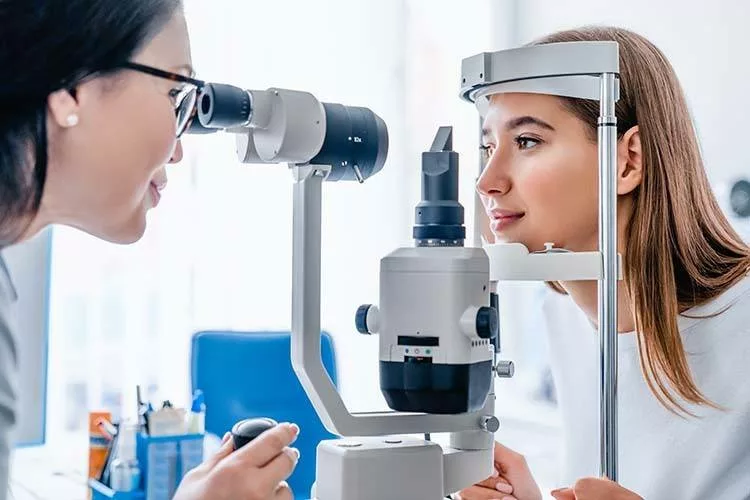Recognizing the Comprehensive Function of an Optometrist in Modern Eye Care
In the progressing landscape of healthcare, the extent of an optometrist's role has actually considerably broadened, expanding well beyond the boundaries of standard vision adjustment. With improvements in technology and a boosting emphasis on preventative treatment, eye doctors are essential in detecting and taking care of chronic eye problems, while additionally taking part in early disease detection. Their know-how in innovative analysis strategies such as optical comprehensibility tomography is invaluable. However exactly how do these obligations intersect with their role in advertising general eye health, and what does this mean for individual outcomes in a collective medical care environment?
Expanded Range of Practice
In current years, the role of eye doctors has developed dramatically, with many specialists now accepting an expanded extent of practice that prolongs beyond typical eye exams. Their obligations currently encompass a wide range of services, including recommending medications for ocular conditions, handling chronic eye illness, and performing small surgical treatments.
Further, eye doctors are now more involved in collaborative care, working closely with ophthalmologists, main care physicians, and other health care experts to make sure alternative client care. This interprofessional collaboration is crucial in managing complex situations that require a multidisciplinary strategy. In addition, optometrists are playing a crucial function in public health and wellness efforts, such as vision testings and eye health and wellness education and learning, focused on boosting community wellness results.
The increased range of technique for optometrists not just boosts their capacity to provide comprehensive treatment but also resolves the growing demand for easily accessible and effective eye treatment solutions, contributing to overall medical care improvements.
Early Condition Detection
Very early detection of eye illness is increasingly coming to be a centerpiece in the increased function of optometrists. As primary eye care carriers, optometrists are distinctly placed to determine early indicators of ocular conditions such as glaucoma, macular degeneration, diabetic person retinopathy, and cataracts. This crucial duty is crucial, as early medical diagnosis can significantly improve the administration and diagnosis of these conditions, potentially stopping vision loss and improving individual outcomes.
Optometrists utilize comprehensive eye examinations to spot refined modifications in vision and eye health. These assessments typically consist of analyses of aesthetic acuity, intraocular stress, and retinal health. The capability to identify very early signs of systemic health and wellness problems, such as high blood pressure and diabetic issues, with eye indicators further underscores the relevance of routine eye exams. Early intervention is not only useful in maintaining vision but additionally in lowering medical care prices related to advanced condition therapies.
In addition, eye doctors play an important duty in patient education and learning, highlighting the importance of regular eye exams as part of overall health care. By fostering an aggressive strategy to eye care, eye doctors contribute considerably to public wellness, guaranteeing diseases are captured and handled efficiently prior to they can advance.
Advanced Diagnostic Strategies
Advanced analysis strategies have changed the practice of optometry, enabling practitioners to find and keep track of ocular conditions with unmatched precision. These innovations have changed the optometric landscape, enabling for much more innovative evaluation and treatment techniques. Technologies such as optical comprehensibility tomography (OCT) provide high-resolution, cross-sectional pictures of the retina, promoting early detection of conditions like glaucoma and macular deterioration. This non-invasive strategy has ended up being crucial in modern optometry, providing thorough understandings into retinal layers.
One more important innovation is electronic retinal imaging, which catches comprehensive views of the retina using high-definition cameras. This technology is essential in determining changes in retinal framework gradually, consequently helping in the administration of conditions like diabetic person retinopathy. Aesthetic area screening, enhanced by computer-aided systems, allows for precise mapping of a client's field of why not try here vision, important in tracking and diagnosing glaucoma development.
Corneal topography, an additional significant diagnostic tool, generates detailed maps of the cornea's surface area. This is specifically helpful in fitting contact lenses and intending refractive surgical procedure. These innovative analysis methods collectively make it possible for optometrists to provide positive, targeted care, guaranteeing far better individual outcomes and enhancing their essential role in eye wellness administration.
Managing Persistent Eye Conditions
Taking care of chronic eye conditions is a cornerstone of optometric treatment that needs a comprehensive understanding of numerous eye diseases and their long-lasting implications. Eye doctors play a critical duty in surveillance, managing, and diagnosing conditions such as glaucoma, diabetic person retinopathy, and age-related macular degeneration. These conditions, if left unattended, can result in substantial visual impairment or blindness, highlighting the critical significance of recurring care and administration.
Eye doctors use a variety of analysis devices, consisting of optical comprehensibility tomography (OCT), visual area testing, and fundus photography, to evaluate the development of these persistent conditions. By closely monitoring changes in ocular wellness, eye doctors can adjust treatment strategies to mitigate disease progression. This might entail suggesting drugs, suggesting lifestyle adjustments, or collaborating with ophthalmologists for surgical treatments when essential.

Duty in Preventive Care
Preventive treatment is an essential element of optometry that focuses on maintaining eye health and preventing the start of eye illness. Optometrists play a critical duty in very early discovery and prevention, utilizing normal eye assessments to determine risk factors and refined modifications in ocular wellness. Eye Doctor Optometrist. These assessments are not just regarding vision modification but incorporate an extensive evaluation of eye features and structures, enabling the recognition of problems such as glaucoma, cataracts, and macular deterioration at an onset
In addition to diagnostics, optometrists inform people on way of life choices that advertise eye health, such as appropriate nourishment, UV security, and the value of regular eye examinations. They advise on the right usage of digital tools to prevent electronic eye stress, a find out here now growing problem in the digital age. Eye doctors additionally offer support on protective glasses for work-related and entertainment tasks, mitigating the danger of injury.
Preventive eye care includes systemic wellness problems that manifest in the eyes, such as diabetes and high blood pressure. By collaborating with other medical care experts, eye doctors add to all natural client treatment, stressing the interconnectedness of systemic and ocular health. This positive technique is crucial in safeguarding aesthetic acuity and total wellness.
Verdict
Optometrists currently occupy a pivotal role in contemporary eye care, defined by a broadened range that includes identifying and handling persistent eye conditions, recommending drugs, and doing small surgeries (Eye Doctor). Their experience in early disease detection is enhanced by innovative analysis strategies such as optical comprehensibility tomography and electronic retinal imaging. By highlighting precautionary care and patient education and a fantastic read learning, eye doctors add considerably to general eye health, collaborating with various other health care experts to guarantee effective and thorough individual results

In enhancement to diagnostics, optometrists enlighten clients on way of living options that advertise eye health and wellness, such as proper nourishment, UV defense, and the value of normal eye examinations.Preventative eye care prolongs to systemic health problems that materialize in the eyes, such as diabetic issues and hypertension.Optometrists currently inhabit an essential duty in contemporary eye care, identified by a broadened range that consists of diagnosing and handling chronic eye problems, suggesting medications, and doing small surgical treatments.